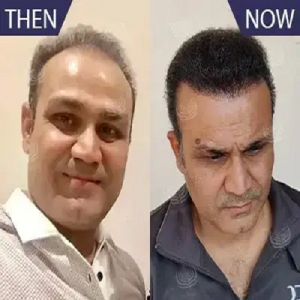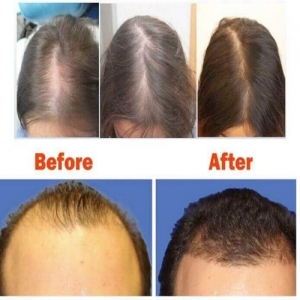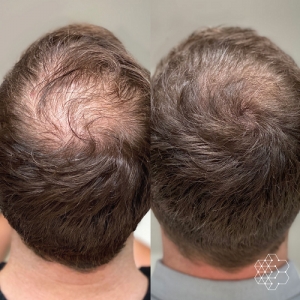Hair Transplant

Hair Transplant
Hair transplant is a surgical procedure performed to treat hair loss or baldness by moving hair follicles from one part of the body (known as the donor site) to another part (known as the recipient site), typically the scalp. It is a highly effective and permanent solution for restoring hair growth in areas where hair has become thin or bald.
Here's how the procedure generally works:
-
Donor Hair Harvesting: Hair follicles are harvested from areas of the scalp or body where hair growth is abundant and resistant to balding, such as the back or sides of the head. These follicles are carefully extracted to preserve their integrity.
-
Recipient Site Preparation: The recipient site, where hair transplantation will take place, is prepared by creating tiny incisions or holes in the scalp.
-
Graft Placement: The harvested hair follicles, often in the form of small grafts containing one to several hairs, are meticulously transplanted into the recipient site using specialized tools and techniques. The placement of the grafts is strategically planned to achieve natural-looking hair growth patterns.
-
Healing and Growth: After the procedure, the transplanted hair follicles enter a resting phase before new hair growth begins. Over time, the transplanted hairs will gradually grow and blend in with the existing hair, resulting in a fuller, more natural-looking hairline and improved overall hair density.
Hair transplant procedures can be performed using various techniques, including follicular unit transplantation (FUT) and follicular unit extraction (FUE). FUT involves harvesting a strip of skin containing hair follicles, while FUE involves individual extraction of follicular units from the donor area. Both techniques offer excellent results, and the choice between them depends on factors such as the patient's hair loss pattern, donor hair characteristics, and surgical preferences.
Hair transplant surgery is typically performed on an outpatient basis under local anesthesia, and patients can usually resume normal activities within a few days to weeks after the procedure. While hair transplant results are considered permanent, it's important to note that the procedure may require multiple sessions to achieve desired outcomes, and individual results may vary. Consulting with a qualified hair restoration specialist can help determine the most suitable approach for addressing specific hair loss concerns.
Send Enquiry



